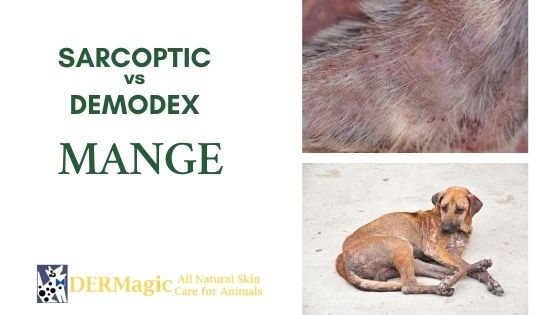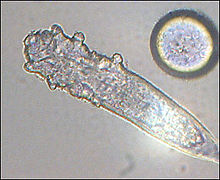
Mange is a word that strikes fear in the heart of most people - and with good reason. Every year, millions of animals contract this itchy (and visually terrifying) condition. There are a few things you should know about mange, even if you’ve never had to deal with it.
First off, it’s important to know the difference between the two types of mange:
Sarcoptic Mange (aka, "Scabies")
Sarcoptic mange is an infection of the skin caused by microscopic, eight-legged mites (known as Sarcoptes scabei).
This type of mange is contagious and can be transferred to other animals and even people (although it doesn't tend to thrive on species other than dogs).
>These mites burrow into your pet's skin to lay eggs, which take about 3 weeks to hatch.
Symptoms vary, but almost always include:
- Itchy, sore skin
- Redness and rash
- Thick yellow crusts on skin
- Hair loss
- Bacteria and yeast infections
- Thickening of the skin
- Inflammation of the lymph node
- Emaciation
However, it’s relatively simple to treat once you know how.
| Canine Scabies 220x |
Sarcoptic mites work very much the same way that ants work - they dig complex networks of tunnels through your dog’s skin to lay eggs, then die.
These eggs then hatch and the adult mites move on, digging more tunnels and repeating a very awful cycle. On top of this, they deposit waste in the tunnels as they burrow through, which leaves a serious infection, hair loss and more terrible symptoms.
The end result (besides terrible itchiness) can be whiteheads, skin infections, hair loss, and crusty scabs around the body.
Yeast infections almost always accompany this condition, often causing black skin and hair loss, as well as severe itching.
Symptoms of Sarcoptic Mange:
- extreme itchiness
- hair loss
- red, scaly skin
- typically start in sparsely-haired areas like the ear flaps, elbows, and abdomen, but can spread to the entire body without effective treatment
Demodectic Mange (aka, "red mange" or "demodex")
 |
| Demodex Mite at 220x |
Demodex mange is due to an “overgrowth” of cigar-shaped mites that are found on skin, and can become a severe problem if left untreated.
While Demodex mites are usually harmless (they are present on all dogs as a normal part of your dog's skin flora), they can become a major problem in immunocompromised, very young, or very old dogs.
Demodectic mange is not contagious to humans.
These microscopic mites are always hiding in the follicles of your pet’s hair. By the time you realize your pet has mange, they have barricaded themselves within the deepest layers of your pet's skin.
Each time they burrow down into another layer, they push more waste (in the form of skin cells and bacteria) behind them. All of that happens before you even start killing the tiny mites off.
Things will usually get worse for your pet when you begin treating and killing off these awful little creatures.
Suddenly, your pet is trying to rid himself of millions of tiny decomposing corpses, along with yeast, dead skin cells, and plenty of other things. They clog up the follicle, create very bad secondary infections and cause your pet to feel miserable.
Symptoms of Demodex
You may not see any symptoms, other than a general weakening of the dog. This type of mange can present as:
- patches of missing skin
- some, if not all, fur loss
- red, scaling skin
- infections
- swelling
- crusts on the skin
Learn more about treating this illness in our article, 5 Things to Expect When Treating Mange.
 |
| Dog with severe Demodex Mange |
Symptoms of Demodectic Mange:
- Patchy hair loss (with relatively normal looking skin underneath).
- Mild to moderate itching (may or may not be present).
- Hair loss may be widespread
Treatment of Mange
Both types of mange will require treatment to heal the skin and control the mites. Your veterinarian will likely need to do a scraping to see what type of mite has invaded, and to ensure that is truly the problem, but once they have done so, you will need to:
- Clip the hair: Clipping the fur helps you treat the problem at the source. Shave fur down to about 1/4" - 1/2" to help lotion (or other treatment) penetrate the skin more easily.
- Treat the skin: Your vet may request that you use a specific product to treat the skin. We prefer the all-natural approach that DERMagic Skin Rescue Lotion provides.
- Eradicate or control the mite: In addition to treating the skin, you may be advised to give your pet an oral treatment, usually in the form of a chewable tablet.
Stay the Course
When treating for mange, it's important that you don't grow frustrated and lose hope. These conditions are both treatable and in most cases, all of your pets hair will grow back.
However, it will take time, patience, and persistence, and additional support of Skin Rescue Lotion to fight the yeast that usually accompanies this disease.


